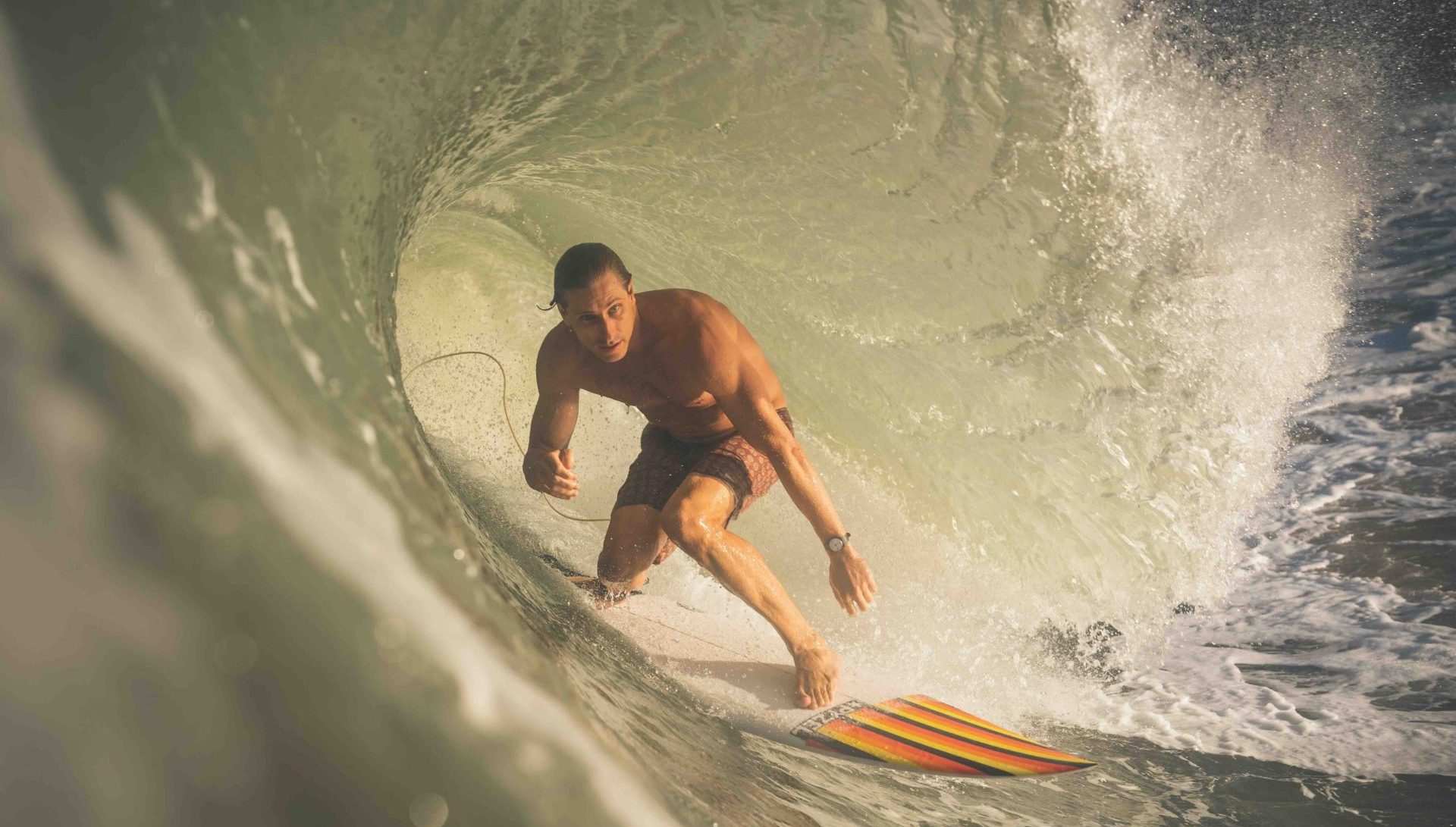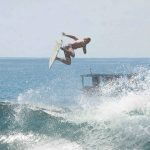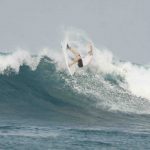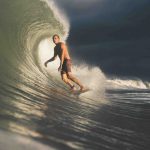In the words of our surfing solicitor Hugh Powell, it’s fair to say that these days, surfers are much more of a diverse bunch than they used to be.
Words: Amber O’dell
You could place any profession or personality next to the words “don’t surf” and chances are, they have been uttered before. And yet, thanks to the countless people we have been fortunate enough to meet through this magazine, we have seen for ourselves that these statements are, more often than not, nonsense.
That’s the thing about surfing – it’s free. From doctors and scientists to architects and lawyers, everyone surfs. Don’t get us wrong, these misconceptions go both ways too. Hugh agrees that, nowadays, surfing seems to have lost a lot of the negative associations it once had.
“The broader acceptance of surfing in society has certainly opened the door to more and more giving it a crack. In my view, there’s no better and more enjoyable way to stay fit and healthy.”
Readers may recognise Hugh as the curator of Smorgasboarder’s ‘Above Board’ column, where every edition he delves into legislation that is becoming increasingly relevant to the world of surfing. Hailing from Travis Schultz & Partners, a boutique law firm on the Sunshine Coast, he is as in tune with the law as he is with the waves.
Naturally, we were curious about what came first – the lawyer or the surfer? Hugh informed us that he has always been enamoured with the sea, and said he was fortunate enough to have grown up on the pristine beaches of Caloundra.
“My dad has always been, and still is, an avid surfer and would take me out to Happy Valley on an old single fin in the early days.
“From there, I have spent most of my time out at Moffat – a great and, in my biased view, underappreciated right hand point.
“Like most places, it gets pretty busy these days but there are still plenty of days where I can jag it by myself or with just a couple of others out.”
We really do mean it when we say that this man can surf – just look at the incredible photos gracing this spread. Like most other groms growing up on the shoreline, Hugh did the usual competition circuits around the Sunshine Coast and Gold Coast through school, but soon branched out to work in different areas of his community.
Despite the obvious talent that he showcases when he is amongst the waves, Hugh said that the competitive surfing industry was never really for him.
“I enjoy the element of solace in surfing, and just being immersed in nature. I surfed around Iceland a few years ago, and had great waves with no one around. Though that was definitely one of the few occasions where it would have been nice to see people in the lineup.
“More recently, my family and I did a trip to the southern atolls of the Maldives earlier this year and managed to score a great run there. Nothing solid, but just super friendly, fun and perfect waves in crystal clear water. That’s hard to beat.”
It’s hard to imagine how blissful of an escape surfing must be for someone in a profession that is so infamous for its intellectual and emotional demand – but that is not all Hugh occupies his time with.
In addition to trying his best to keep his young family’s veggie garden alive and well, he is also a board member of Sunshine Coast Rugby Union, a volunteer solicitor at Suncoast Community Legal Service and a former committee member of the Sunshine Coast Law Association.
In between all of these responsibilities, we couldn’t help but wonder what kinds of boards Hugh grabs on the way out the door when he does get the chance to disappear into the waves. We were interested to know that, when it comes to his surfing preferences, he tends to pick and stick.
“I’ve never been one to be too experimental or out there with board selection, mostly jumping between two boards. My go-to for the last 15 or so years has been a 5’7 original Lost Rocket – fast, loose and fun.
“It’s the perfect board for the Sunshine Coast given that it rarely gets above 5 to 6 ft throughout the year. I usually just swap back and forth between the Rocket and a performance shortboard, which is currently a Highline Pyzel, for when it is a bit more solid.”
Of course, when he is not carving it up on the shores of the Sunshine Coast and taking up important roles within his community, Hugh works as a highly regarded lawyer.
While the cliché of a ‘stiff’ lawyer combined with a ‘chill’ surfer certainly makes for an interesting contrast, the demand for all legal lines of work in Australia has actually increased by 45 percent since 2011, so it’s really no surprise that we are seeing more and more surfers embracing a career in law and breaking the flimsy stereotypes that surround both lifestyles.
Hugh said there wasn’t any one particular thing that led him into the world of law, as it was a natural fascination that simply grew over time.
“I developed a general interest in it during high school and then dived straight into studying law at university. I then found myself working in insurance litigation in Maroochydore, which is the defence of personal injury claims on behalf of insurance companies.
“After a while, it became a bit soul-destroying working for insurers. When I was struggling to answer for myself what value I was giving back to the community, I realised it was time to move on. I eventually saw the light and jumped across the other side of the table, joining Travis Schultz & Partners in 2019.
“I am now a Partner and head up the Sunshine Coast office of the law firm. We are a specialist compensation law dedicated to making a positive impact on our clients and throughout the community by offering expert legal advice without the price tag.”
After successfully completing his Bachelor of Laws from the University of Queensland in 2011, Hugh zeroed in on personal injury and compensation law – also known as tort law. For those that aren’t fluent in legalese (us), tort law is essentially civil wrongdoing committed by one party against another, and includes cases around negligence, trespass, defamation and personal injury.
Not only did Hugh become highly experienced in this specialised area, but he also went so far as to reach the finals at the prestigious Ron Shorter Awards in 2018 run by the Australian Insurance Law Association.
Hugh said he has also been fortunate enough to have received some recognition by his peers over the past couple of years in Doyles Guide – awards that are determined by peer-review based surveys as well as extensive telephone and face-to-face interviews with clients, peers and relevant industry bodies.
“This year in Queensland I was recognised as a Leading Lawyer in Workers Compensation and Public Liability law as well as a Recommended Lawyer in Accident Compensation.
“In reality, any recognition like this is more a reflection of the great team and people we have at Travis Schultz & Partners who all individually contribute to the outcomes we achieve.”
It was Hugh’s expertise in all things compensation that led to his insightful articles on tort law and public liability – topics that overlap with the surf a lot more than you might think, especially considering the boom in surfing statistics over the years and the increasing number of people moving to the coastal towns of Australia.
As you would expect, Hugh has dealt with his fair share of beachside cases while working for a law firm nestled behind the shoreline of Mooloolaba. When asked about the fascinating crossroads between legislature and surfing, Hugh said that, interestingly, some of the landmark cases in tort law have involved people injured while at the beach or in the ocean.
“For example, Wyong Shire Council v Shirt (1980) 146 CLR 40 involved a situation where the Council was held to be negligent for a water skier who broke their neck because the Council placed a ‘deep water’ sign where the water was actually shallow.
“There have otherwise been countless cases over the years involving injuries from diving from bridges and other platforms as well as into sandbanks. Some won, some lost.
“There have also been numerous cases involving injuries suffered when struck by a surfboard between the flags. There has been the odd successful case, usually on the basis that the beach or the area between the flags was not sufficiently patrolled or supervised, but many have been dismissed.
“The reason why these cases always involve the injured person being between the flags is because that allows the claim to be pursued against either the local council or lifesaving club, who are insured against these events, rather than the person who actually caused the harm, who is likely to be uninsured and more difficult to recover anything from.”
After making the rounds in the media earlier this year, perhaps the most significant legal development that has caught the attention of the surfers recently was the ground-breaking decision by the Byron Shire Council to make legropes compulsory when using a surfboard.
This change was sparked by an incident at Wategos Beach in Byron Bay after surfer Matthew Cassidy was struck by a stray surfboard before suffering life-threatening injuries. Hugh discussed this incident in Smorgasboarder’s very first ‘Above Board’ column, as the revived discussion about the use of leg ropes compelled people to think a little bit differently about how the law interacts with the lives of everyday surfers.
Hugh let us know that he is not aware of any legal action that arose from that incident, but the potential is certainly there given the nature of what happened.
“What we could see happen is that this incident, and the Byron Shire Council’s decision to mandate the use of leg ropes, could actually be a catalyst for claims in that region.
“Having made its well-publicised decision, the Council has inherently acknowledged the risks associated with surfers failing to wear leg ropes in crowded breaks were significant enough to warrant some action in response – unless this is properly enforced by the Council, it could come back to bite them.”
Given the increase in the number of surfing-related incidents over the years, and considering that surfing is one of the fastest growing activities, we are certainly grateful to be able to pick the brain of Hugh on how to stay safe and reduce risk amongst the waves.
Needless to say, lawyers do surf, and it’s a very good thing they do too. Who else will be there to speak on behalf of surfers and help maintain the essence of surfing within legislature? Especially when more laws, and more people, are becoming so intrinsically tied to our way of life.






